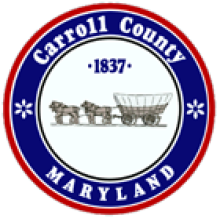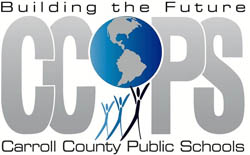
Fast, affordable Internet access for all.

Carroll County is a bedroom community, with a variety of economies all around it. Washington, D.C., Camp David, Baltimore, Harrisburg, Fort Detrick, and the Aberdeen Proving Ground are a few of the places surrounding Carroll County. There is very little major transportation infrastructure and no major waterways. Many of the county's 167,000 people commute daily to jobs outside of the bullseye.
Gary Davis, Chief Information Officer at the Carroll County Public Schools (CCPS) and Chairman of the Carroll County Public Network (CCPN) started at the school district in 2002 and immediately recognized that the telecommunications arrangement was insufficient.
Schools and other facilities were connected to the hub via 1.5 Mbps T1 connections and the whole wide-area-network was connected to the Internet via an expensive Frame Relay DS3 connection. The total cost ran as high as $600,000 per year.
When CCPS approached Verizon about increasing bandwidth, Verizon’s proposal was extremely cost-prohibitive. Verizon wanted a long-term commitment that resulted in more than 10 times their current costs. Basically, Verizon would own the network but capital costs would be funded by CCPS and maintained with ridiculously high recurring fees. The return on investment for Verizon was just too low owing the community demographics.
At that time, Davis met Robert Wack of the Westminster City Council and the two compared notes. Davis' vision for Carroll County Public Schools and Wack's ideas for Westminster and Carroll County were very similar. Both involved a high-speed network and Westminster is currently involved in its own municipal network project (to be covered in an upcoming post).
A 2003 feasibility study on telecommunications upgrades for the school and a second broader feasibility study for the entire county in 2005 resulted in a loose confederation between CCPS, Carroll County Government, Carroll Community College, and the Carroll County Public Library system. Davis is proud of the fact that the CCPN has broken through past silos. The public sector has worked together in Carroll County, preventing the rampant duplication of efforts that used to be the norm.
Davis says the first focus was on improving educational opportunities with the network. The four entities were able to work together as the CCPN to secure better pricing by leveraging economies of scale. Carroll County applied $7.4 million from its capital project fund to get the project started, the original estimate in the 2005 feasibility study. CCPS also applied funds from its technology budget that had originally been earmarked for upgrades to phone switches.

Switching from the old telephone system to a VoIP system for the district's approximately 1,000 phone lines amounts to about 40% of today's savings at CCPS. Davis estimates annual savings to CCPS to be around $400,000, which also factors in costs associated with the network. Turning off old T1 connections and abandoning the pricey DS3 connection also contribute significantly to annual savings. Connections between district facilities now vary between 1 and 10 gigs.
Reducing spending is great, he says, but what really matters is the way the network improves the ability to educate. The old T1s and DS3 would not have been able to deliver the bandwidth for applications educators use today. For example, CCPS is experimenting by using the network to connect kids across the county who want to participate in Advanced Placement classes. These classes might not be offered otherwise because there may not be enough students at one location. In the pilot program, several students from schools across the county participate through video streaming, concentrating educator efforts and creating a more vibrant learning experience.
CCPS shares a 500 Mbps Internet connection with the local public library, ten times faster than the old DS3. The public library is also on a separate power grid, which makes it attractive as a secure back up data center for the school district, Carroll County Government, and Carroll Community College.
As the network has expanded, the CCPN has used a variety of funding. A state awarded BTOP grant, with matching funds from the county economic development fund, added to the original school district and county investment. Davis estimates that the county has invested about $12 million over the course of 10 years.
The network now consists of three rings with the fourth central ring in Westminster, the county seat. "Spokes" lead out to the southern end of the county, where community leaders hope to connect with Frederick or Baltimore County. Eight municipalities use the network's 110 miles of fiber over 450 square miles in Carroll County. There is one school in the northern part of the county that is not connected with fiber but uses high speed wireless supported by the fiber.
The network has changed education in Carroll County and done so with significant savings. Davis acknowledges that the change came about through the work of the CCPN Administration, which he describes as an ideal model. "Each member organization contributes its leaders' expertise and what all members CAN do together, they DO do together," says Davis.
For CCPS, the results speak for themselves.
